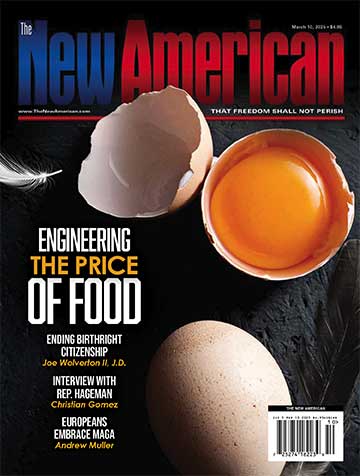
Said the Bureau of Labor Statistics on Friday, “total nonfarm payroll employment rose by 145,000 in December, and the unemployment rate was unchanged at 3.5 percent.” It also noted that the long-term unemployment rate U6 (which includes discouraged workers no longer seeking jobs and part-time workers seeking full-time employment) dropped to the lowest level since the agency started reporting it in 1994.
This followed the report from ADP on Wednesday that the U.S. economy added 261,700 jobs in December and caps off a remarkable year for the U.S. economy.
For the year, new jobs rose by 2.1 million, following a gain of 2.7 million in 2018. Since Trump’s inauguration, the U.S. economy has added more than seven million new jobs. The robust economy has simultaneously reduced those on food stamps (SNAP) by four million while adding $5,000 a year to the average American’s household income.
Wall Street has soared as well, with the popular averages gaining between 20 and 35 percent during 2019.
The outlook for 2020 looks for a repeat, according to a number of the more accurate forecasters. The president’s trade advisor, Peter Navarro, said, “I’m looking forward to a great 2020. Forecast wise, I’m seeing closer to 3% real GDP growth than 2%. I’m seeing at least 32,000 on the Dow.”
Putnam Investments chief investment officer Shep Perkins agrees: “The earnings yield of stocks has been higher than the 10-year bond yield since [2000]. The difference between them has been near an extreme recently, which makes equities [stocks] arguably undervalued. When comparing stocks with bonds, stocks have almost never been cheaper.” He added that “resilient earnings growth … could power the S&P [500 Index] to … 5,000.”
After all, said Perkins, it’s happened before, and recently: “In March 2009 [the beginning of the present economic recovery from the Great Recession] the S&P 500 Index bottomed at 666. It would be quite impressive if 15 years later it reached 5,000.”
Indeed it would. That index first touched 3,000 last July and closed Thursday at 3,271. From there to 5,000, the index would have to gain 50 percent. But since Trump’s inauguration that index has gained 44 percent. Given a second term, President Trump could preside over another such remarkable gain as he continues to implement policies favoring the free market private capitalist system that’s responsible of the world’s highest (and improving) standard of living.
The only fly in the ointment is the Federal Reserve. Investors have been lulled to sleep by pronouncements from high officials that everything is just wonderful and not to worry about any interventions by the central bank for the foreseeable future.
For instance, on Thursday Fed Vice Chairman Richard Clarida intoned: “I believe that monetary policy is in a good place and should continue to support sustained growth.… As long as incoming information about the economy remains broadly consistent with this outlook, the current stance of monetary policy will likely remain appropriate.”
This is “Fedspeak” for: “We’re on hold for the time being. Have a nice day.”
Except that the Fed has been intervening in the money markets ever since September when it reversed course, and Clarida knows it. It had up until then been slowly liquidating its enormous $4 trillion balance sheet which it ran up during the Great Recession. But in September, as The New American reported, it began adding to the money supply (which causes price increases, or what the popular but uninformed press calls inflation) billions of new money to keep the so-called re-po market from imploding. That market was having serious trouble digesting the enormous flood of new spending by the Treasury and it forced overnight interest rates to spike in order to draw in new capital. Most of those billions in newly created money helped fund repurchase agreements between secondary parties handling the new Treasury debt, with the balance used to purchase Treasury securities outright.
On Wednesday the Fed added another $46 billion to the money markets, followed on Thursday by another $83 billion. Since September the Fed’s balance sheet has exploded upward by more than $300 billion, bringing its balance back above $4 trillion.
And the Fed isn’t done, by any means. Clarida said “a [still] larger base of [newly created] reserves … might be needed at least through April, when tax payments will sharply reduce [the need for new money to fund the Treasury’s huge obligations].”
Newly created currency is inflationary, and when it starts showing up as price increases it just might provide the excuse the Fed needs to start raising interest rates again. It will be remembered that the Fed raised interest rates in 2018 when they weren’t needed, causing the economy to slow and the equity markets to crater.
The Fed could do it again, just in time for the election.
Image: Warchi via iStock / Getty Images Plus
An Ivy League graduate and former investment advisor, Bob is a regular contributor to The New American, writing primarily on economics and politics. He can be reached at [email protected].
Related articles:
Strong U.S. Economy Improving Trump’s Chances for Reelection




